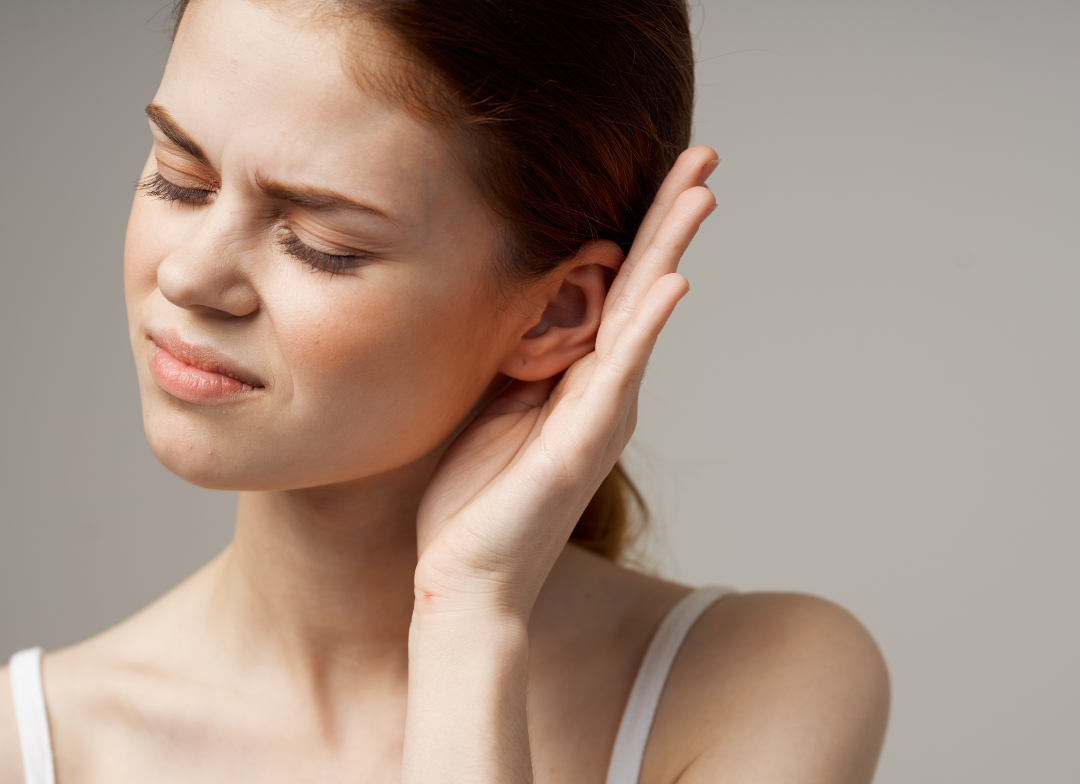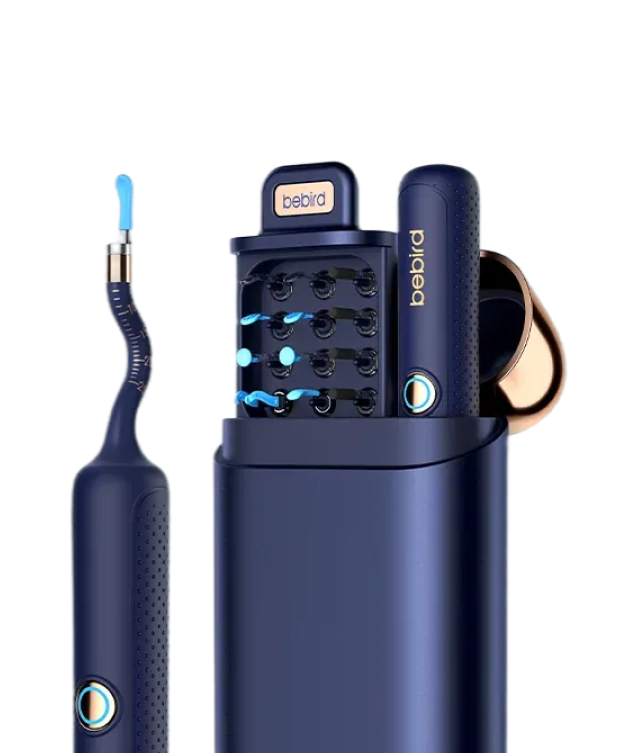The sensation of ear pain creates discomfort, which disrupts your ability to focus on daily activities. The condition develops from infections and fluid accumulation, and changes in blood pressure. Home remedies provide fast relief and comfort for treating minor issues. Medical treatment becomes essential to handle the underlying problems in some cases. Learning proper methods to reduce ear pain will help you maintain your overall health. In this article, we will explore how to reduce pain in the ear. Let’s dive in.
Common Causes of Ear Pain
Ear pain can come from a variety of causes, ranging from minor issues to more serious conditions. Some common triggers include:
-
Middle ear infection causes sharp or throbbing pain.
-
Earwax buildup creates pressure and discomfort.
-
A sinus infection leads to radiating ear pain.often making the ears feel heavy and congested. What helps ear pain from sinus infection is usually steam inhalation, rest, and proper hydration, which can ease both sinus pressure and ear discomfort.
-
A throat infection can spread pain to the ear.
-
Temporomandibular joint disorder triggers earache symptoms.In some cases, an ear infection can cause jaw pain as well, since the ear canal and jaw share nearby nerves, leading to discomfort when chewing or talking.
-
Allergies may cause fluid buildup and pain.
-
Air pressure changes result in ear discomfort.
How to Relieve Ear Pain at Home
There are a few safe and practical home remedies that can help with ear pain. Try these easy ways to relieve ear pain before seeing a doctor:
Pain Relievers
Take medicines such as ibuprofen or acetaminophen to lessen ear pain and fever. The CDC notes that many ear infections—and their associated pain—can be managed effectively with rest, plenty of fluids, and over-the-counter pain relievers like ibuprofen or acetaminophen. Use the dose as directed, particularly for children, and don’t give aspirin to those under 16.[1][2]
Warm or Cold Compresses
Use a heating pad or cold pack on the side of your head or neck. Change water temperature in 10-minute intervals as necessary. It can safely relieve pain and inflammation even for adults and children.[2][3]
Olive Oil Drops
Slightly warm a few drops of olive oil and drop them in the ear to soften earwax and alleviate pressure. Don’t use it if the eardrum is pierced or if symptoms continue.
Hydrogen Peroxide Drops
Hydrogen peroxide can also dissolve built-up wax. Drop a few drops into the ear, wait for a bubbling sound, and let it drain. Use when wax buildup is the likely cause, and not for use in individuals with a perforated eardrum.[2][3]
Elevate Head While Sleeping
Elevate the end of your head with additional pillows during sleep so the infected ear remains raised. Positioning promotes drainage and diminishes pressure, which can help to reduce the pain of an earache while sleeping.
Ginger or Garlic
Warm garlic oil or ginger juice can be applied outside the ear. Each has anti-inflammatory and mild antimicrobial effects. Distinguish carefully; do not insert too directly.
Steam Inhalation
Breathe in the steam of hot water for 5–10 minutes to help unblock your nose and encourage the Eustachian tube to drain. Be careful to avoid burns.
When Should You See a Doctor
There are some types of ear pain that get better at home, but certain symptoms indicate that it’s time to see a doctor for proper care and safety.
-
Ear pain that is too severe and not improving with home care.
-
Persistent fever along with ear discomfort or drainage.
-
Sudden hearing loss in one or both ears.
-
Fluid, pus, or blood in the ear canal.
-
An increase or inflammation in the area of the ear.
-
Dizziness, balance problems, or severe headaches accompany ear pain.[1][3]

How to Prevent Ear Pain
Basic preventive measures ensure good ear condition and reduce the chances of future discomfort. Such as:
Keep Ears Dry and Clean
Wetness promotes bacterial development and causes infection. When having a bath or swimming, dry your ears very softly with a soft towel. To ensure safety when removing earwax, clean the ear with safe and effective ear cleaning tools such as Bebird EarSight Complete Smart Ear Cleaner and avoid harming the delicate ear canal.
With the Bebird EarSight Complete, you get a clear view of your ear canal using its advanced 10MP endoscope camera. The thin 3.1 mm lens is comfortable and safe for adults and children. The skin-friendly wax scoops and tweezers work for all wax varieties,which is a gentle earwax removal kits suitable for all ages. The Wi-Fi app enables you to monitor, record, and manage ear health at home conveniently.

Avoid Inserting Objects Into the Ear Canal
The ear canal or the eardrum can be damaged when cotton swabs or sharp objects are inserted inside. Clean only the outer ear with a soft cloth. This method of ear protection reduces the chances of ear pain, infection, and permanent damage and preserves overall ear health.
Protect Ears From Loud Noises
Loud noise can lead to broken ear structures, resulting in pain or hearing loss. Use earplugs or noise-canceling headphones in noisy environments. Keep exposure time short and manage the level of volume through devices to ensure ear wellness and avoid any form of discomfort.
Pay Attention to ENT Health Issues
Sinus, throat, and nose issues can cause ear pain. Timely care provides a way to avoid complications. The Bebird EarSight R1 Portable Ear Cleaner 3-in-1 Kit gives you the ability to check the health of your ENTs at home. It has a 3MP HD camera with six LED lights for an intact view of the ear canal.
Its Wi-Fi connection allows you to stream real-time pictures to the Bebird app on your smartphone. The kit comes with multiple heads that can be replaced based on the earwax type. It is a multi-purpose instrument for ear, nose, and oral inspection, providing full coverage of ENT health monitoring.
FAQs
How to tell if your ear pain is an infection?
This is how to know whether ear pain is due to an infection:
-
Fever with ear pain is a common sign of infection.
-
Pus or fluid that drains out of the ear can portend infection.
-
The typical symptom is swelling, redness, or tenderness that occurs around the ear.
-
Sensations of pain that increase with chewing or when lying down may also be an indication of a middle ear infection.
-
Fluid accumulation because of infection often causes reduced or muted hearing.
-
One of the symptoms of an ear infection may be irritability, especially in children.
Can ear pain go away on its own?
Yes, certain ear pains can heal on their own, particularly in cases of some mild irritation. Simple home treatments such as warm compresses, painkillers, and ear dryness are usually helpful.According to Mayo Clinic, most middle ear infections tend to resolve within a week or two without antibiotics, especially when symptoms are mild and properly managed at home.
Does Ear Infection Pain Come on Suddenly?
Yes, ear infection pain can be sudden and is usually sharp or throbbing pain. It can progress rapidly, particularly in children. Sudden pain is typically accompanied by fever, drainage with fluid, or changes in hearing, which is why you will need timely medical help to avoid complications.
Conclusion
Ear pain may interfere with your daily life, but knowing its causes and remedies helps you cope with the pain. Basic home treatment and prevention usually can be helpful. Prevention of moisture and loud noises in the ear and treatment of ENT problems decreases the development of recurrence. Seek medical care for severe or persistent pain.
References
[1] Mayo Clinic. Ear infections: Diagnosis & treatment. Mayo Foundation for Medical Education and Research.
[2] Centers for Disease Control and Prevention (CDC). Ear infection (otitis media): Information for patients.
[3] Cleveland Clinic. Earache (Ear Pain): Symptoms, Causes & Treatment.
















Leave a comment
All comments are moderated before being published.
This site is protected by hCaptcha and the hCaptcha Privacy Policy and Terms of Service apply.